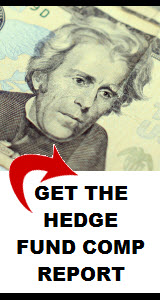By the 1990s, many hedge funds no longer resembled the classic long-short model created by Alfred Jones back in 1949. Instead, they used modern financial derivatives such as futures and options which didn’t exist back in the 1950s. With so many new hedging tools, the hedge fund universe exploded to as many as 4,000 different funds. However, not all the new funds faired as well as Soros’ fund.
In 1998, Long-Term Capital Management (LTCM), a hedge fund based in Greenwich, Connecticut, was managing close to $120 billion in assets on just $4.5 billion in capital, according to a report by the International Monetary Fund. The fund was founded by John Merriweather, an experienced bond trader formerly with Solomon Brothers, and two professors, Robert Merton and Myron Scholes, who both shared a Nobel Prize in Economics. Thus, investors thought they were privy to a highly sophisticated method of generating unusually large returns backed by investment superstars.
The fund bet that interest rate spreads would narrow, using a variety of financial instruments including bonds, swaps, options, stocks and derivatives. Many trades were simple and low-risk, but they also used an unusually large amount of leverage to enhance returns.
But in the summer of 1998, the Russian government defaulted on its bonds which caused investors to panic and trade their European and Japanese bonds for the safety of U.S. government bonds. Instead of the price gap between U.S. and international bonds shrinking, as they had bet, it widened. Long-Term Capital Management couldn’t repay the large amounts of borrowed money they owed, putting pressure on investors who had loaned them the money. The U.S. Federal Reserve Bank finally had to step in with a restructuring plan to prevent a major financial catastrophe. In the end, Long-Term Capital Management burned through $4.6 billion dollars in a matter of days.
With the high profile failure of LTCM, there was increasing pressure to regulate hedge funds. In 2004, the Securities and Exchange Commission required hedge fund managers and sponsors to register as investment advisors. This requirement forces hedge funds to keep up-to-date performance records, hire a compliance officer and follow a code of ethics.
The hedge fund industry has continued to evolve in recent years. The industry developed a “fund of funds” approach which invests in multiple hedge funds run by multiple managers. A fund of funds approach provides greater diversification for investors, more protection against any single fund’s performance, and in many cases, a lower minimum investment for participating (as low as $25,000) than the $250,000 or more required for accredited investors in single hedge funds.
The economic downturn, however, has taken its toll on industry. Performance for most funds in 2008 was the worst in over a decade. Many funds were hit by redemption requests from investors, to the point where some funds limited or even halted redemptions completely in order to remain in business. Limited redemptions and lower performance shook investor confidence. Industry experts predict a pullback in the number of funds that will be operating by the end of 2009.
Moving forward, the industry appears to be stabilizing, with fund of funds returns and performance by absolute return, relative value and other hedge fund strategies earning into positive territory.
Today there are roughly 9,000 hedge funds managing approximately $2 trillion in assets, according the Alternative Investment Management Association (AIMA). Although the industry has grown dramatically in the past decade, this $2 trillion in assets still only represents an amount equal to the 25 largest equity mutual funds in the U.S.
The increasing number of institutional investors who are investing in hedge funds, such as pension funds, insurance companies, banks and endowments, is a key driver of future growth. These institutional investors, much like high net worth investors, seek positive returns that are not correlated to the broad public markets.
Hedge funds are and will remain the arena where the best and brightest and most sophisticated investment minds put their personal investment philosophies to the test.
References:
Logue, Anne C., Hedge Funds for Dummies, Wiley Publishing






Comments on this entry are closed.